I’m at it again. Randomly picking colors and wondering if they will work together. This time I have some Apple Barrel paints I would like to try with those cute mini shot glasses that make me so happy. Let’s do a multi-cup flip cup!
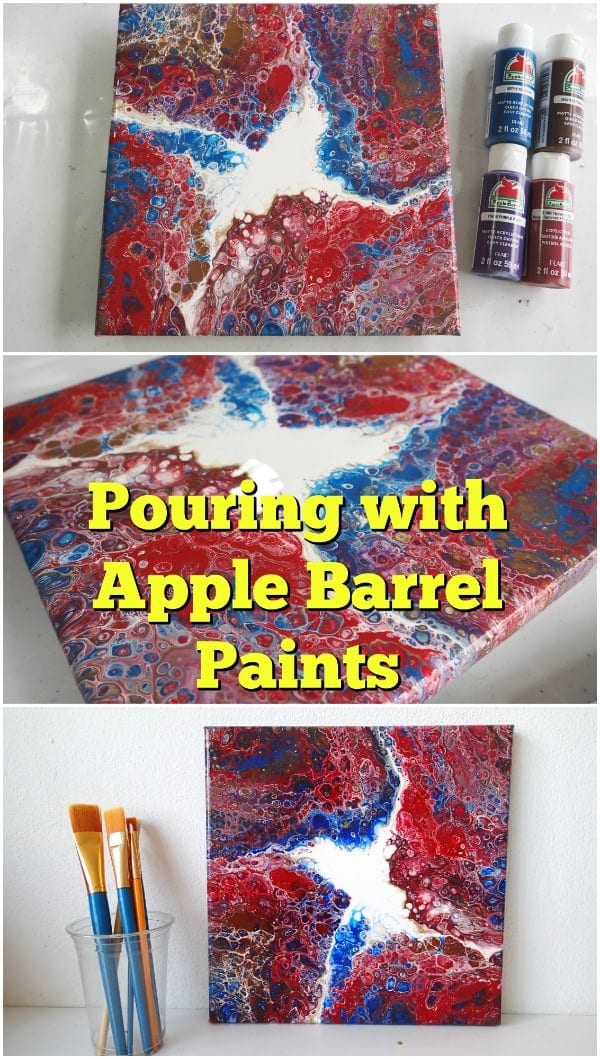
I’ve been so keen to use these mini shot glasses again just because they make me happy. Anything miniature is so delightful. I thought 4 of them would be the ideal size for a small multi-cup flip on a 10-inch canvas, although I had enough paint that I could have stretched it out a lot more in the end, and it would have been more than enough for a 12-inch canvas. I’d rather have too much paint than not quite enough.
Materials used in this painting:
10-inch canvas from multipack
Apple Barrel paints in Nutmeg Brown, Purple Pansy, Flamenco Red and Too Blue
Art Alternatives Titanium White and Gold
Thin-x paint thinner from the DIY store
Floetrol
Treadmill belt silicone
2oz mini shot glasses
Polycrylic protective finish
Recipe:
The Apple Barrel paints were mixed with the Thin-X and 2 drops of oil per color. The white for the negative space was mixed 2 parts paint to 1 part Floetrol plus water and no silicone added. The white and gold in the squeeze bottles were mixed 2 parts paint, 1 part Floetrol plus water to a creamy consistency and also had the treadmill silicone. Don’t be worried to mix and match different mixes and recipes within the same painting. So long as the consistency of the paints is the same, they will all work well together.
So that was a big mix and match of all sorts of paints, mediums, and mixes. You really can use a variety of products in your pours and even the cheaper paints can create nice paintings. Plus every time you add gold to something, or glitter, you make it better.
As usual, here is a slideshow of photos from this pour, both wet and dry, and close-ups of the details.
After being told in high school that she was so bad at art that she should switch to another subject, Deby didn’t paint again for 35 years. Then a stroke released a new wave of creativity and she began exploring with dot painting, abstract and eventually acrylic pouring, and at last the joy of working with color returned. You don’t need ‘talent’ to be an acrylic pouring artist – just enthusiasm, some basic instruction, and a willingness to try, fail and try again. Paint along with her and learn from her many mistakes, and you’ll soon make great art together.

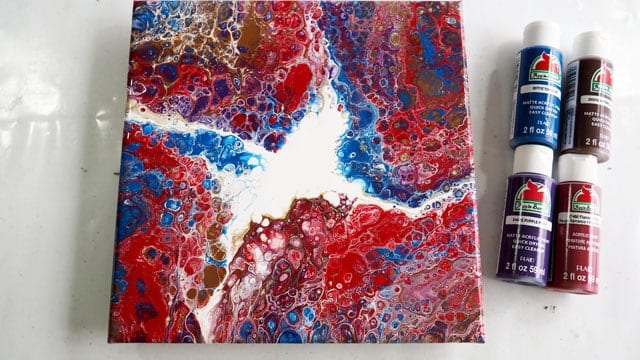
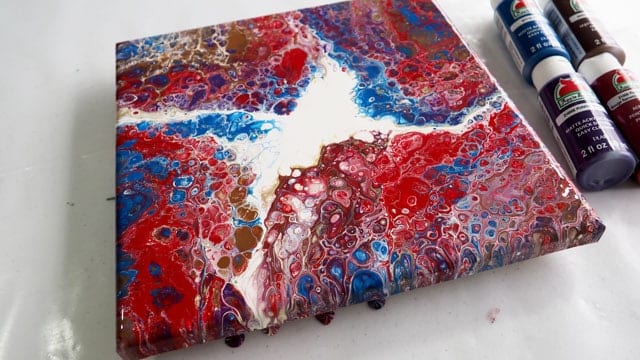
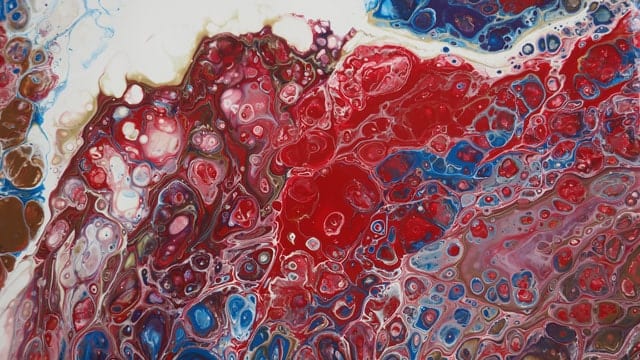
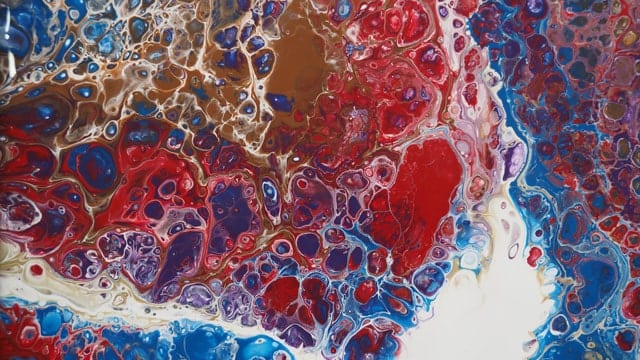
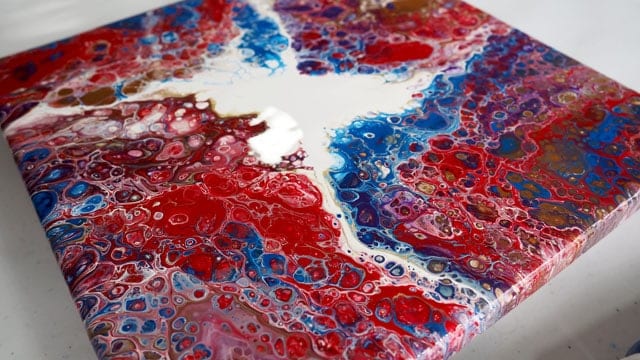
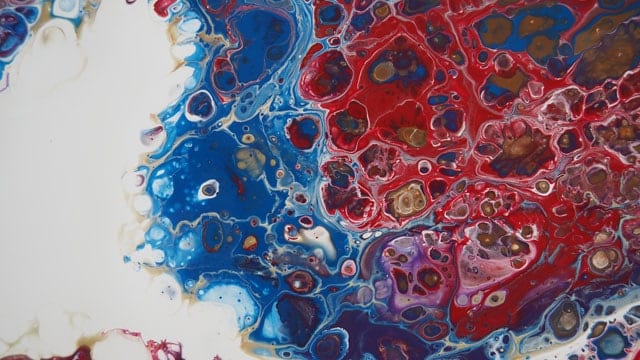
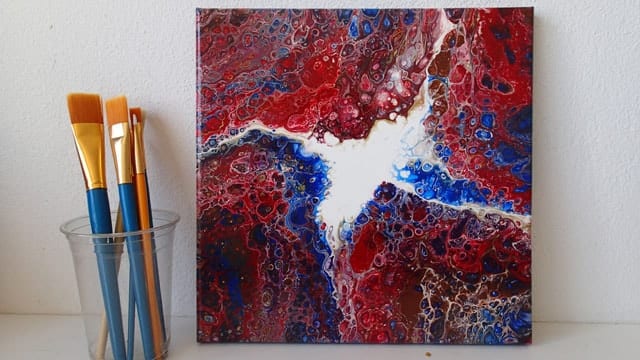
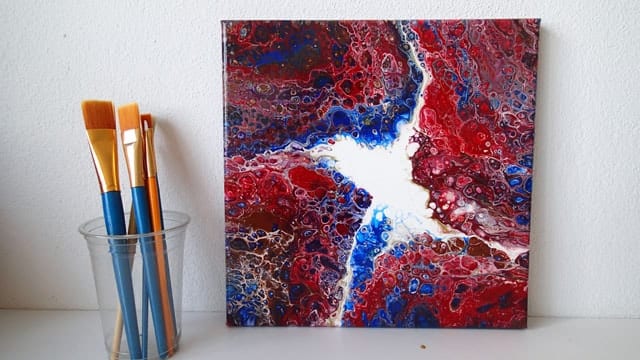
Love all of your videos. Maybe you could show how you use up your paint that runs off of the canvas, I always seem to get mud when I try and use the paint that is leftover. Thanks for all the information you share.